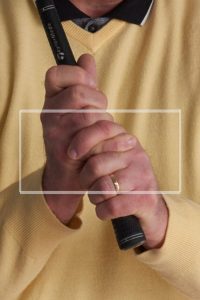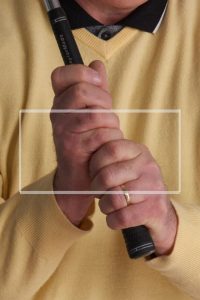#GolfsFundamentals
- May 19, 2021
- 3 min read

Grip Routine's,
Issue 2, 2021
Now is a great time to get your golf swing checked ahead of the coming season and there's nothing better than improving your basic fundamentals, especially the grip.
A neutral grip allows you to concentrate on the rest of your game by providing a level of confidence for the basic building blocks of golf.
In this post we will look at how to create a sound and consistent swing by building a solid grip and enforcing the relationship that you build with your club.
“Neutral Grip – natural confidence”
A good natural grip, learnt from the out set, will alleviate work and frustration later in your progression. And enable you to focus on what you want to achieve rather than what you want to avoid.
A neutral grip frees you up to concentrate on what is achievable. And help provide a level of confidence stopping those doubts.
Golf's Fundamentals

Good Grip Routine
If your routine changes from shot to shot then its very difficult to achieve the perfect grip.
“Griping the club should be the last action you take before starting your pre-shot routine”
The handle of the club should be steady whilst placing the hands into position. Set up the grip away from the ball and in front of your body

Fig 1
In fig1 the player has firstly taken the club in their right hand, which allows them to check that the club is still, and that the head is square.
By holding the club steady it ensures a good delivery of the hands to the club.
A comfortable grip on the club leads to better control of the club head, creating better rhythm and club head speed.
Left Hand Grip
Fig 2 Fig 3 Fig4 Fig5
As shown in the transition between fig’s 2-5 the player first places their left hand to the side of the handle before pushing up the left wrist thereby arching the wrist and placing the grip towards the end of the fingers. They have then placed the fingers around the grip, before putting the hand on top of the club.
It is important to note that the club should be mostly in the fingers. Avoid over-tightening the hands on the handle as this will restrict the wrist action.
The Right Hand Grip
Fig1 Fig 2 Fig 3
In fig1 the player again approaches the club from the side with an open hand, thereby enabling them to easily view the placement of the club from above.
The handle of the club is placed in the middle of the fingers.
The placement of the handle at this point is essential for the perfect grip and much care should be taken in ensuring the correct position. In a later post, will later examine the issues that can occur if this is incorrect.
The player then gently folds the fingers around the handle, whilst bringing the palm of the right hand, up and over, covering the thumb on the left hand.
The correct grip pressure is essential for all golfers. If its to loose the club will move around whilst the player swings. If its to tight the player restricts the wrist movement and the speed of the club head.
Joining the Hands
There are several options available to you when deciding on how to link your hands together for the grip. Each has their own own advantages and disadvantages and the most suitable method is determined largely by the strength, flexibility and size of the hands and fingers.
over lapping grip inter locking grip baseball grip
The overlapping or Vardon grip is widely regarded as the best of the grips. The little finger sits on top of the left hand between the third and fourth fingers, offering more feel and club head con
The interlocking grip is possibly the most widely used grip, though it might not be the best grip to use for each golfer. This grip generally adds the feel of power to the grip and is ideal if the golfer has reduced strength or flexibility, or has smaller hands and fingers.
The Baseball grip allows both hands to be in contact with the club, helping spread fingers further down the grip. This is ideal for people with small hands, short fingers and less strength in their wrists.
Adrian Whitehead: The Grip



























Comments